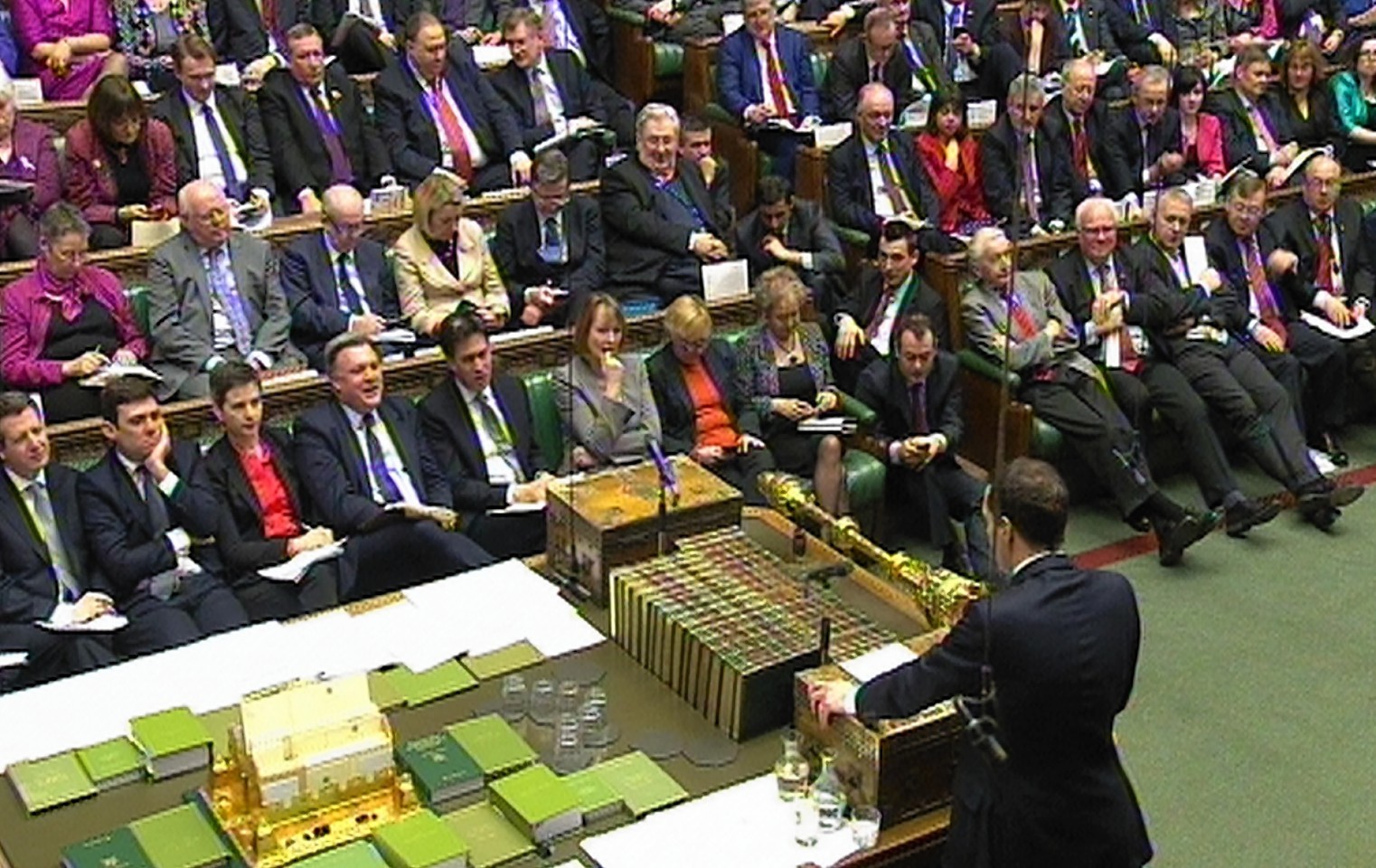George Osborne said today that his austerity squeeze on public sector spending would end a year earlier than expected as official forecasts revealed an improved picture for the UK economy.
Mr Osborne claimed Britain was “out of the red and into the black” as he unveiled an outlook showing that borrowing is set to be £5 billion lower than expected over the next three years.
Delivering his last pre-election Budget, the Chancellor also revealed improved growth projections pencilled in by the independent Office for Budget Responsibility (OBR).
Meanwhile the level of national debt is also expected to start falling earlier than previously thought.
Mr Osborne said: “This is a Budget that takes Britain one more big step on the road from austerity to prosperity.”
The Chancellor revealed that the OBR expects gross domestic product (GDP) to grow by 2.5% this year, up from a previous estimate, at the time of last December’s Autumn Statement, of 2.4%.
Its forecast for 2016 growth is upgraded from 2.2% to 2.3%, but for 2017 it is downgraded from 2.4% to 2.3% while for 2018 it remains at 2.3%. In 2018 it is expected at 2.4%, up from 2.3%.
Meanwhile, underlying borrowing, which stood at £97.5 billion in 2013/14, is expected to fall to £90.2 billion for the current fiscal year to the end of this month – down from a previously expected £91.3 billion.
For 2015/16, it is expected to be £75.3 billion, down from £75.9 billion, while in 2016/17 the deficit is pencilled in at £39.4 billion, down from £40.9 billion.
The figure for 2017/18 is expected at £12.8 billion, down from £14.5 billion, while in 2018/19 there is expected to be a surplus of £5.2 billion, up from £4 billion. However the previously forecast £23.1 billion surplus for 2018/19 is revised down to £7 billion.
Meanwhile, debt as a proportion of GDP is expected to fall in the next fiscal year to 80.2% after a forecast 80.4% for 2014/15.
Mr Osborne said this would mean he meets the debt target set out in his first Budget, with the current Parliament ending with Britain’s national debt share falling. OBR figures had previously forecast that it would not start falling until 2016/17.
The Chancellor told MPs: “Because the national debt share is falling a year earlier than forecast at the Autumn Statement, the squeeze on public spending ends a year earlier too.
“In the final year of this decade, 2019-20, public spending will grow in line with the growth of the economy. We can do that while still running a healthy surplus to bear down on our debt.”
